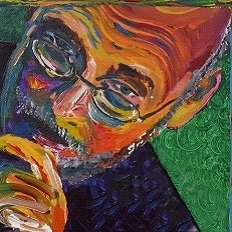Trust your gut
Throughout history, medical researchers have taken some extreme steps to prove their theories.
What does it take to be successful in medical research? Ingenuity? Perseverance? A bit of insanity? Likely some combination of the three.
Research has gone hand in hand with clinical practice for centuries. In 1747, James Lind conducted one of the first documented controlled experiments, with a simple design and only twelve sailors as subjects, finding citrus fruit to be an effective therapy for scurvy. (See “Scorbitus,” November 2018 Newman's Notions.)

Over the years, experimental techniques have progressed, assuring statistical relevance and improving the quality and validity of research. Simultaneously, the standards for publication have become increasingly rigorous, and many researchers are “regretfully informed” that their manuscript cannot be accepted for publication. Dr. Lind's work, though impactful, may not have found a home in one of today's most respected medical journals, given that it was underpowered.
An alternative study design, self-experimentation, may provide a loophole to avoid the institutional review board and other authorities. While not the gold standard, this method can open a door for those brave enough. Albert Hofmann accidently dosed himself and became the first user of LSD. Werner Forssmann performed the first cardiac catheterization on himself. John Hunter gave himself syphilis, and Mikhail Balayan drank a stool slurry to prove that hepatitis E was fecal-oral in transmission. If the thought gives you a stomachache, then consider the story of Barry Marshall.
Barry Marshall is an Australian gastroenterologist, born to a nurse and a tradesman in 1951. With inadequate academic marks to pursue engineering, he instead ventured into medicine. As a junior physician searching for a research project, he was connected to pathologist Robert Warren. Dr. Warren had logged specimens from approximately 100 patients without an established diagnosis who shared a similar spiral-shaped bacterium on gastric biopsy. Dr. Marshall soon linked this bacterium to gastritis and peptic ulcer disease.
In 1989, the bacterium was renamed Helicobacter pylori. However, in a time when peptic ulcers were universally attributed to stress and acidic foods, Dr. Marshall's theory met harsh criticism. Additionally, since H. pylori is only pathogenic in humans, Dr. Marshall was unable to develop an animal model. His conclusions were deemed unsubstantiated. His frustration grew, and so he decided to experiment on himself.
After a baseline esophagogastroduodenoscopy (EGD), Dr. Marshall drank a broth of bacteria. He developed nausea and vomiting two weeks later. A second EGD revealed gastritis and H. pylori on biopsy. A third EGD after antibiotics confirmed cure. Soon, H. pylori was accepted as a pathogenic cause of peptic ulcer disease.
Self-experimentation (with an n of 1, no randomization, and no control group) may be the ugly duckling of experimental models, but Dr. Marshall's discovery earned him and his colleague Dr. Warren a Nobel Prize in Physiology or Medicine (and self-experimentation!)—an achievement also attained by Dr. Forssmann.
Standards in medical research place a high bar for findings that will guide clinical practice. But perhaps certain clinical questions require a more creative approach, as Dr. Marshall explained in his Nobel Prize biography:
“It seemed to me that for the sake of patients this research had to be fast tracked. The sense of urgency and frustration with the medical community was partly due to my disposition and age. However, the primary reason was a practical one. I was driven to get this theory proven quickly to provide curative treatment for the millions of people suffering with ulcers around the world.”



